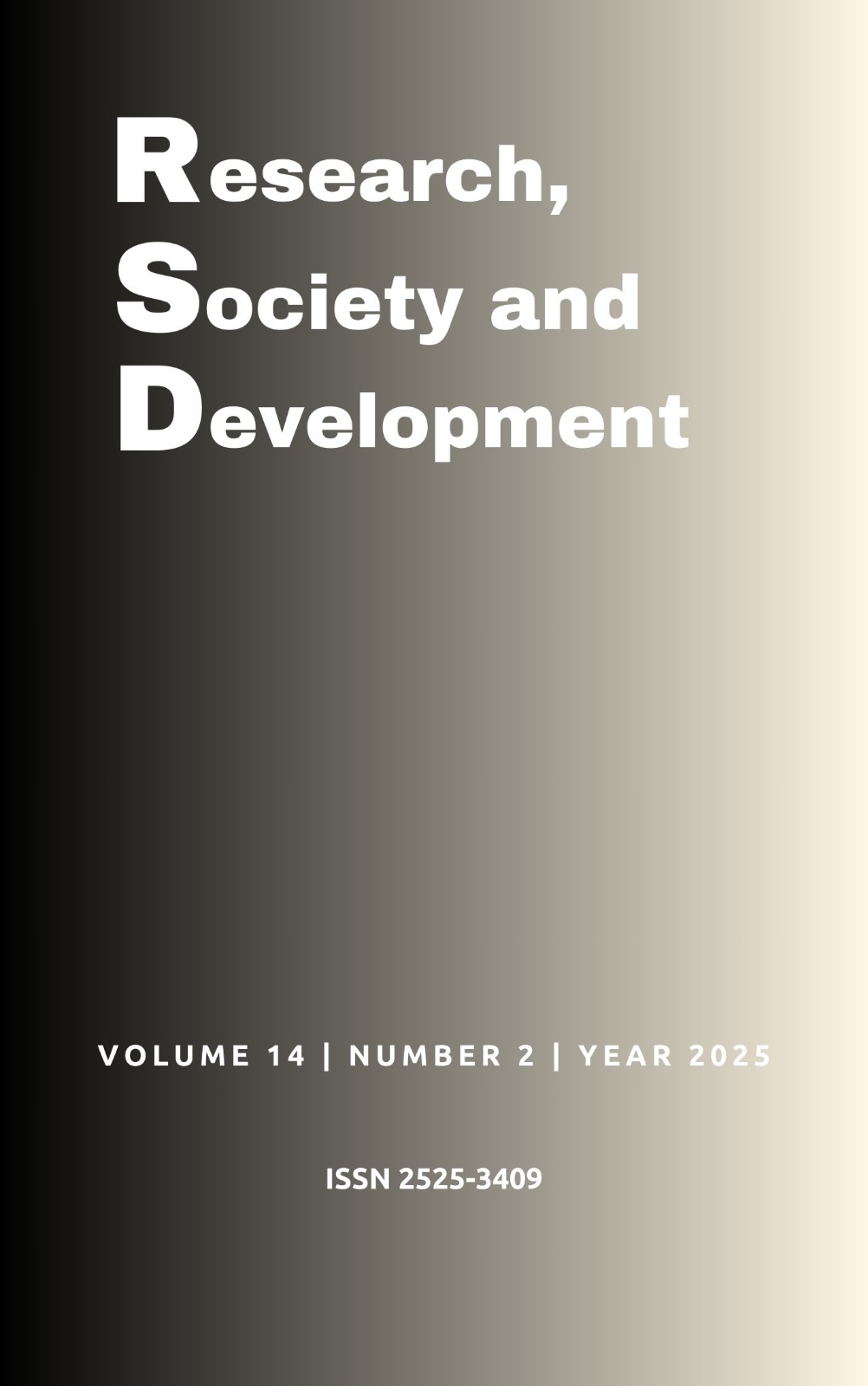Investigation of abrasive wear resistance properties by using specific minerals as components of the abrasive solution in the fixed rotating ball test
DOI:
https://doi.org/10.33448/rsd-v14i2.47844Keywords:
Abrasive minerals; ASTM A-36 Steel; Wear coefficient; Wear simulation; Permanent regime.Abstract
Industrial sectors, in partnership with universities, have studied abrasive wear. This study aims to analyze the action of wear on equipment surfaces, by measuring parameters such as area, diameter, and worn volume, resulting in the determination of the wear coefficient. Experimental laboratory research was carried out, in which three abrasive minerals were used: gneiss, iron ore waste, and silicon carbide. The materials underwent comminution and sieving, collecting the 400-mash pass-through. The wear tests were carried out on ASTM A-36 steel specimens, prepared at the Technological Center (CTec) of the State University of Minas Gerais, João Monlevade campus (UEMG-João Monlevade). Four wear tests were defined, with sliding distances: 25, 50, and 100 meters. The equipment used combined normal force with load C to evaluate abrasive wear. During the tests, the abrasive slurries were applied drop by drop to the contact area between the test specimens and the fixed sphere. The results showed that iron ore waste and gneiss showed increasing variation in wear coefficient, with different rates. There was an increase in the wear coefficient in silicon carbide tests, but in the last test, there was a reduction. This study demonstrates the feasibility of the equipment developed to simulate abrasive wear, providing important data on the factors that influence wear and the achievement of a permanent wear regime.
References
Cozza, R. C. (2006). Estudo do comportamento do coeficiente de desgaste e dos modos de desgaste abrasivo em ensaios de desgaste micro-abrasivo. Dissertação (Mestrado em Engenharia) - Escola Politécnica, Universidade de São Paulo, SP.
Cozza, R. C. (2011). Estudo do desgaste e atrito em ensaios microabrasivos por esfera rotativa fixa em condições de força normal constante e pressão constante. Tese (Doutorado em Engenharia) - Universidade de São Paulo, São Paulo, SP.
Bayer, R.G. (1994). Mechanical wear prediction and prevention. Marcel Dekker. 657 p.
ISO. (2008). ISO 26424:2008(en). Fine ceramics (advanced ceramics, advanced technical ceramics) — Determination of the abrasion resistance of coatings by a micro-scale abrasion test.
Gil, A. C. (2017). Como elaborar projetos de pesquisa. 6ed. Atlas.
Hutchings, I.M. (1998). Abrasive and erosive wear tests for thin coatings: a unified approach. Tribology International. 31(1–3), 5-15. https://doi.org/10.1016/S0301679X(98)00004-8.
Oliveira, D. L. (2015). Construção de um equipamento de ensaio de desgaste micro abrasivo por esfera rotativa fixa para análise do desgaste em revestimento duro aplicado por soldagem. Dissertação Mestrado em Engenharia - Universidade Estadual Paulista, Faculdade de Engenharia de Ilha Solteira, Ilha Solteira, SP.
Pereira a. s. et al. (2018). metodologia da pesquisa científica. UFSM.
Pinto Jr., D. M. et al. (2018). Tecnologia siderúrgica. Ed. Poisson.
Rabinowicz, E., Dunn, L. A. & Russell, P. G. (1961). A study of abrasive wear under three-body conditions. Wear, 4(5), 345-55. https://www.sciencedirect.com/science/article/pii/0043164861900023. 10.1016/00431648(61)900023.
Shitsuka, R. et al. (2014). Matemática fundamental para tecnologia. (2a ed.) Editora Erica.
Silva, V. A. & Costa, A. R. Desgaste de poliuretano por erosão úmida: desenvolvimento de um ensaio tecnológico. Tecnologia em Metalurgia, Materiais e Mineração, 15(2), 144-150, 2018.
Stoeterau, R. L. (2004). Introdução ao projeto de máquina-ferramentas modernas. Universidade Federal de Santa Catarina, Departamento de Engenharia Mecânica. https://docplayer.com.br/4121521Introducao-ao-projeto-de-maquina-ferramentas-modernas.html. Acesso em: 03 dez. 2023.
Trezona, R. I. & Hutchings, I. M. (1999). Three-body abrasive wear testing of soft materials. Wear, Lausanne. 233/235, 209-21.
Downloads
Published
How to Cite
Issue
Section
License
Copyright (c) 2025 Gustavo Evangelista da Silva; José Gedael Fagundes Júnior; Flavio Luiz Costa

This work is licensed under a Creative Commons Attribution 4.0 International License.
Authors who publish with this journal agree to the following terms:
1) Authors retain copyright and grant the journal right of first publication with the work simultaneously licensed under a Creative Commons Attribution License that allows others to share the work with an acknowledgement of the work's authorship and initial publication in this journal.
2) Authors are able to enter into separate, additional contractual arrangements for the non-exclusive distribution of the journal's published version of the work (e.g., post it to an institutional repository or publish it in a book), with an acknowledgement of its initial publication in this journal.
3) Authors are permitted and encouraged to post their work online (e.g., in institutional repositories or on their website) prior to and during the submission process, as it can lead to productive exchanges, as well as earlier and greater citation of published work.

